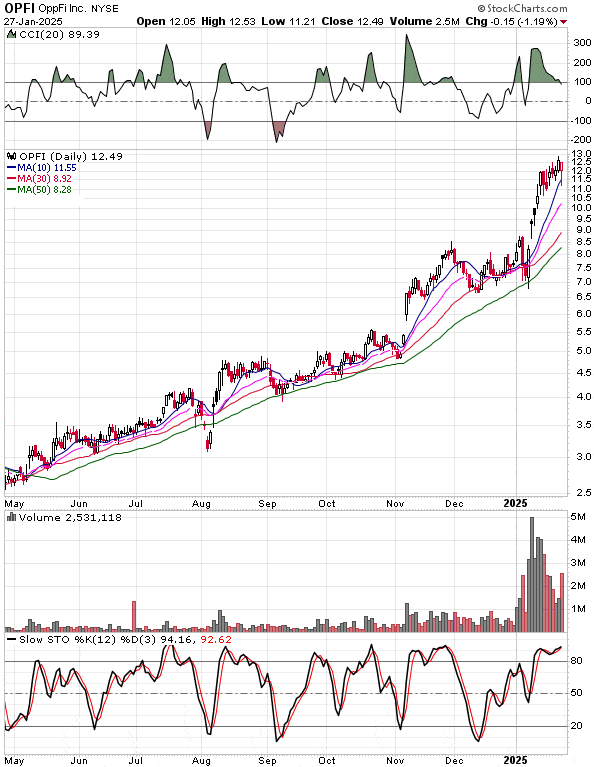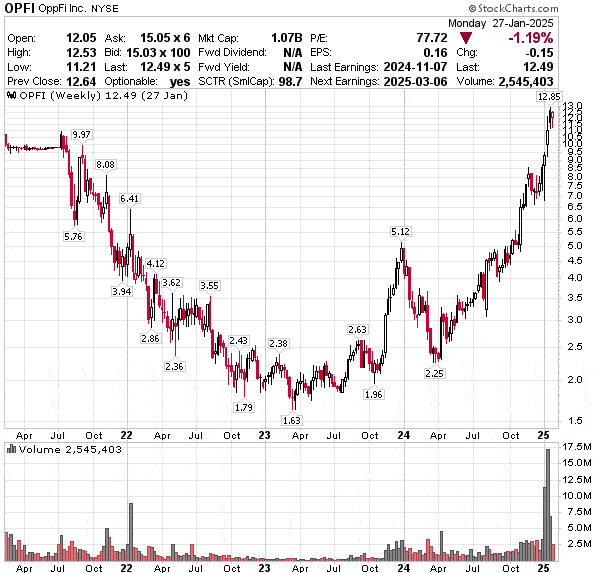The Importance of Long-term Charts When Swing Trading
One of the smartest things you can do when first looking at a swing trading opportunity is to bring up a 10 year weekly chart of the stock.
A long-term chart can tell you how successful the management team and business model has been over the longer-term. The long-term trend is also a powerful guiding force that a lot of newer traders overlook.
How to Know Which Direction a Stock is Likely to Head
One of the worst pieces of advice I have heard over the past 20 years is that what a stock has done in the past does not matter – only where it is going. Or, worse yet, prior success is a bad omen for future success because now the bar is set too high.
So a stock that has lost value consistently over the long-term is OK and does not matter when considering the future potential of a stock is what that infers.
Our response?
Sure. So glad we never took that advice.
Get Off to a Better Start
Meanwhile, many of the best traders in history will tell you to avoid stocks in long-term downtrends.
Paul Tudor Jones, for instance, is famous for saying nothing good happens below a 200 day moving average. And he is considered one of the best traders of all time. Other great traders we have studied have similar attitudes about stocks in long-term downtrends.
We would add that a stock below a declining 200 day moving average is even worse.
So one of the first steps to better trading is to focus on stocks above a rising 200 day moving average. And, yes, the past does matter because it tells you if you are dealing with a successful management team and business model over time or not.
By default, this steers you clear of stocks below $5 because they have to get to those prices somehow. Unless there has been a recent large market crash, why would the stock be at those levels?
Another Good Reason to Start with a Long-term Chart
Another great reason to start by looking at a 10 year chart is to see if there are larger patterns in place that could be either bullish or bearish.
One of the biggest trades we nailed for customers so far in 2025 was found with the help of a long-term chart. The stock was OPFI.
On a daily chart we can see how the stock was forming a high tight flag pattern. One of the best patterns covered in the new rapid account growth course.

Charts courtesy of StockCharts.com
Once we look at a long-term chart, however, we also see another very bullish pattern. A large, sweeping rounding bottom pattern.

Charts courtesy of StockCharts.com
The classic entry point in the rounding bottom pattern is a move above the left lip of the cup shaped pattern. A typical target would be calculated by taking the size or height of the cup shaped pattern and projecting that height from the top left lip of the pattern.
So the stock had reached the technical entry point in the rounding bottom and was going through its first consolidation after that point. A great time to take a look at it for a potential trade. It was also near the entry point in the high tight flag pattern.
After featuring OPFI near a good entry point in both bullish patterns, the stock quickly reached our entry trigger and 34% profit target within a couple weeks while holding a very tight stop-loss below the technical entry point.
The Lesson to Apply to Future Swing Trades
So just by starting with a 10 year chart, we could see the very large rounding bottom pattern forming over the past three years.
In a prior blog post we talked about how the best chart pattern is a stock with multiple very bullish chart patterns on different time-frames with matching fundamental factors. In this case, it was a high tight flag pattern formed on the right side of a large rounding bottom pattern. The price often takes off as the price trends higher on the right side of the large cup shape pattern.
The other key to this trade was the Zacks #1 rank of the stock indicating the relatively strong rising estimates versus the average stock in the market.
Also, banks and financials are helping to lead the market currently. So money is looking for stocks in this area of the market. And the valuation seems to be within reason.
Our Favorite Strategies for Rapid Account Growth
Identify and Trade the Rounding Bottom Pattern




